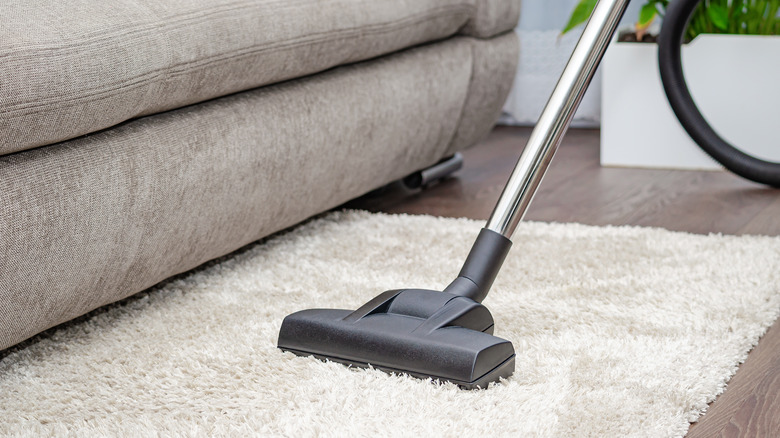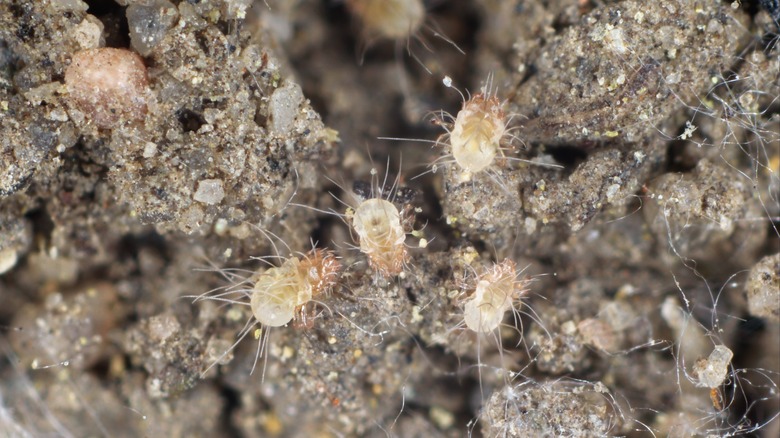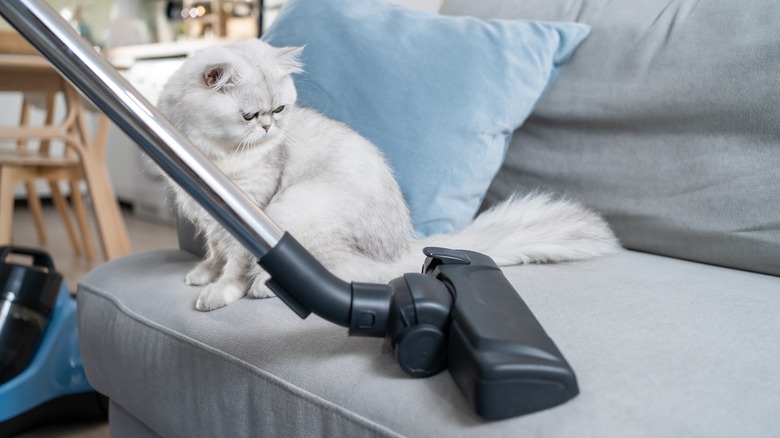You Probably Didn't Know The Vacuum Cleaner In Your Home Can Do This
The vacuum cleaner has become a maintenance mainstay from its inception as a horse-drawn behemoth to today's robot incarnation. England's Hubert Cecil Booth invented the first mechanical cleaner to use vacuum power. In 1901, he devised the so-called Puffing Billy; as Vacuum Cleaner History says, a device so large that its engine was placed outside a building and its hose inside.
An estimated 50 million vacuum cleaners are sold in the United States every year, per Onedesk, and the gadget is the go-to appliance in 98% of American households. There are many varieties, including upright, canister, and stick-style vacs. In addition, some types are wet and dry, and some utilize steam cleaning. Of course, a vacuum cleaner works by sucking air into it and is typically used to pick up dust and other small particles. It passes the contents through a filter and deposits them into a canister or bag. It then expels the treated air out the other side. Other than its basic cleaning functions, though, this most widely used household helper has all sorts of applications beyond the obvious.
Unexpected vacuum cleaner abilities
You can use your vacuum cleaner to locate and rescue small items lost in your home. Cover the hose with old leggings, stockings, or tights and fasten it. Then probe between couch cushions or behind furniture. You'll be surprised at what might turn up and be captured, Woman's Day notes. Furthermore, a good way to freshen a room is to sprinkle baking soda on soiled or tired-looking rugs, pillows, or fabrics. Wipe with a damp cloth, let dry, and vacuum. This method can also restore a mattress.
You can also enlist a vacuum cleaner to deodorize your entire house: Infuse a cotton ball with your favorite essential oil and put it into an empty vacuum cleaner bag. Turn on the device, and it will emit the fragrance. According to Kitchen Infinity, another trick your VC can perform is deodorizing foul-smelling items, such as shoes, clothes, or stuffed toys by placing them in a trash bag with cat litter. Let sit until odor-free and vacuum to remove the dust.
Besides sucking up normal dust and dirt, a vacuum cleaner has insect- and allergen-removing properties. The Spruce explains that a university study concluding regular vacuuming will remove 96% of a residence's fleas. Dust mites and their food source of human skin are no match for a hoover; neither are rodent droppings, spider egg sacs, bees in the attic, or an army of cockroaches. Just make sure to empty the VC bag afterward.
More uses and some taboos
A vacuum cleaner can remove stains as well. Vacmaster suggests putting a cleaning solution on discolored areas of car seats. A wet or dry vacuum will draw out the stains and cleanser from the upholstery fibers. After washing it, you can dry your car using the vacuum's blower setting. Vacuum Specialists also provides a hint: Use your device as a leaf blower. Some vacuum cleaners have drain unclogging attachments, and others have pet grooming accessories. However, the jury is still out on the advisability of "vacuuming" your dog or cat. Some claim their animal is soothed; others say terrified.
A vacuum cleaner can also be used on a refrigerator's coils or condenser, and it can suck up lint from a dryer vent as well. This will boost efficiency, prolong the lives of the appliances, and remedy a possible fire hazard in the case of the dryer. Unplug appliances first, or disconnect the energy source before vacuuming. A crevice attachment will provide easy access to the tight spaces. Electronic keyboards can also be effectively vacuumed.
On the other hand, it is important to avoid sharp, wet, or anything else that could clog the hose. In addition to causing potential harm to the machine, you risk potential electrocution. Only a wet or dry vac is appropriate against liquids. Large broken glass shards are detrimental, and vacuuming wet coffee grounds will gum up the works. Makeup might melt in one, and coins and bolts are also a no-no.


